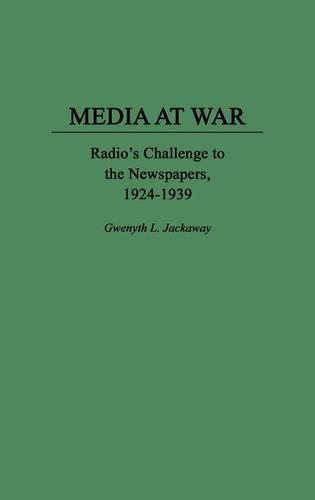
Media at War: Radio's Challenge to the Newspapers, 1924-1939
(Hardback)
Publishing Details
Media at War: Radio's Challenge to the Newspapers, 1924-1939
By (Author) Gwenyth L. Jackaway
Bloomsbury Publishing PLC
Praeger Publishers Inc
20th November 1995
United States
Classifications
Tertiary Education
Non Fiction
Film, TV and Radio industries
News media and journalism
070.1940973
Physical Properties
Hardback
184
Width 156mm, Height 235mm
369g
Description
Fought when radio was first introduced, the Press-Radio war was an attempt on the part of print journalists to block the emergence of radio news. For nearly a decade, the newspapers of America fought to keep broadcast journalism off the air, exerting various forms of economic, regulatory, and legal pressure against new competitors. This study traces the stages and forms of institutional self-defense utilized by the press. Far more than mere battles to protect profits, media wars are fights to preserve the institutional power that derives from controlling the channels of communication.
Reviews
Media at War is a case study of the period from 1924, the year in which the airways first reposted election returns, through 1939, the year that the Associated Press finally lifted its ban on providing news briefs to radio. During these years most newspapers attempted to block the development of broadcast journalism. At stake was the power to control news distribution--the power to shape public opinion and set the national political agenda. * Choice *
In her deeply researched 1995 book, Media at War: Radio's Challenge to the Newspapers, 1924-1939, scholar Gwenyth L. Jackaway charts a similar set of complaints leveled by newspapers against the upstart medium of radio in the 1920s and 1930s. * Slate.com *
Author Bio
GWENYTH L. JACKAWAY is an Assistant Professor of Communications at Fordham University, New York, where she teaches courses in media history, mass culture, and research methods.
